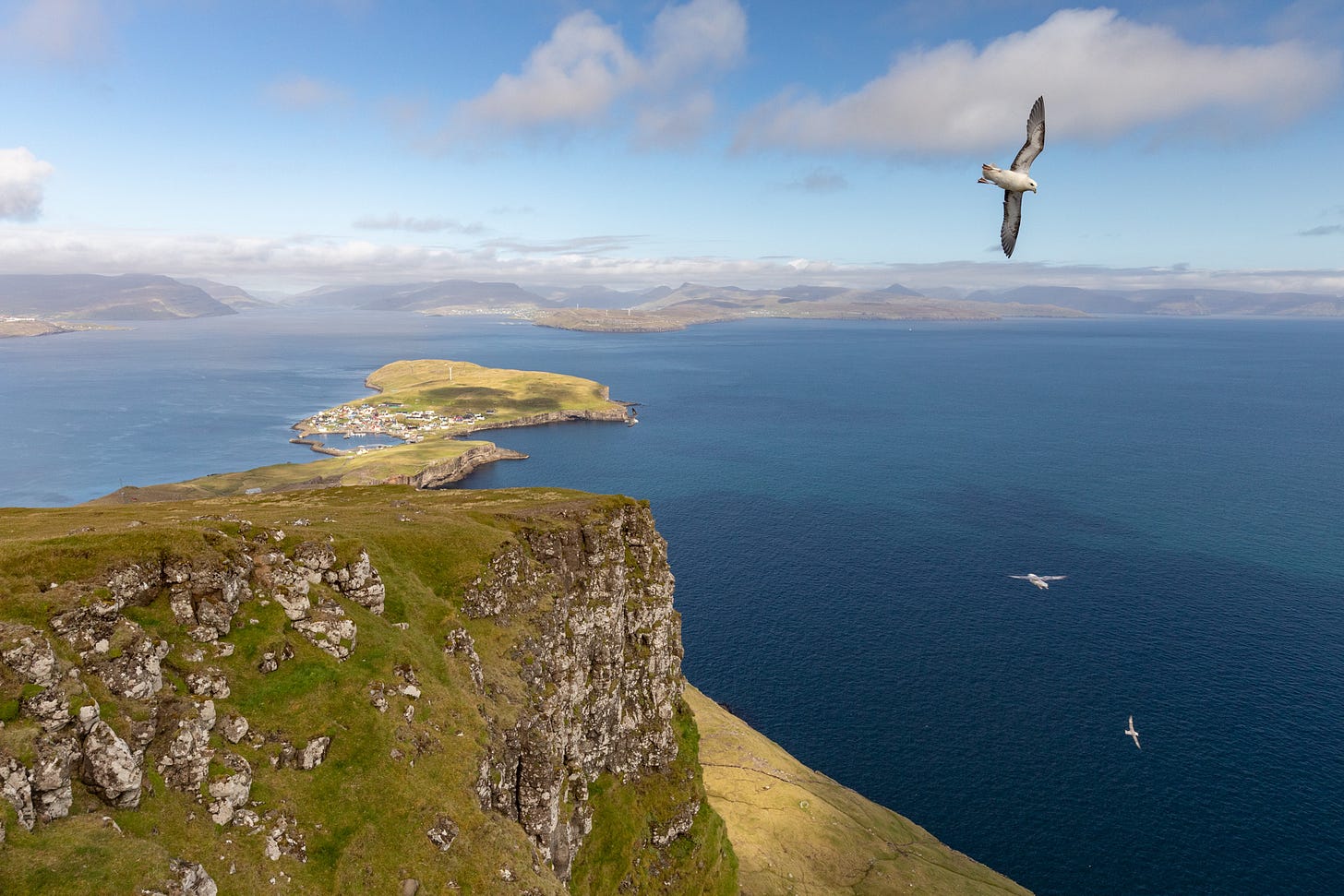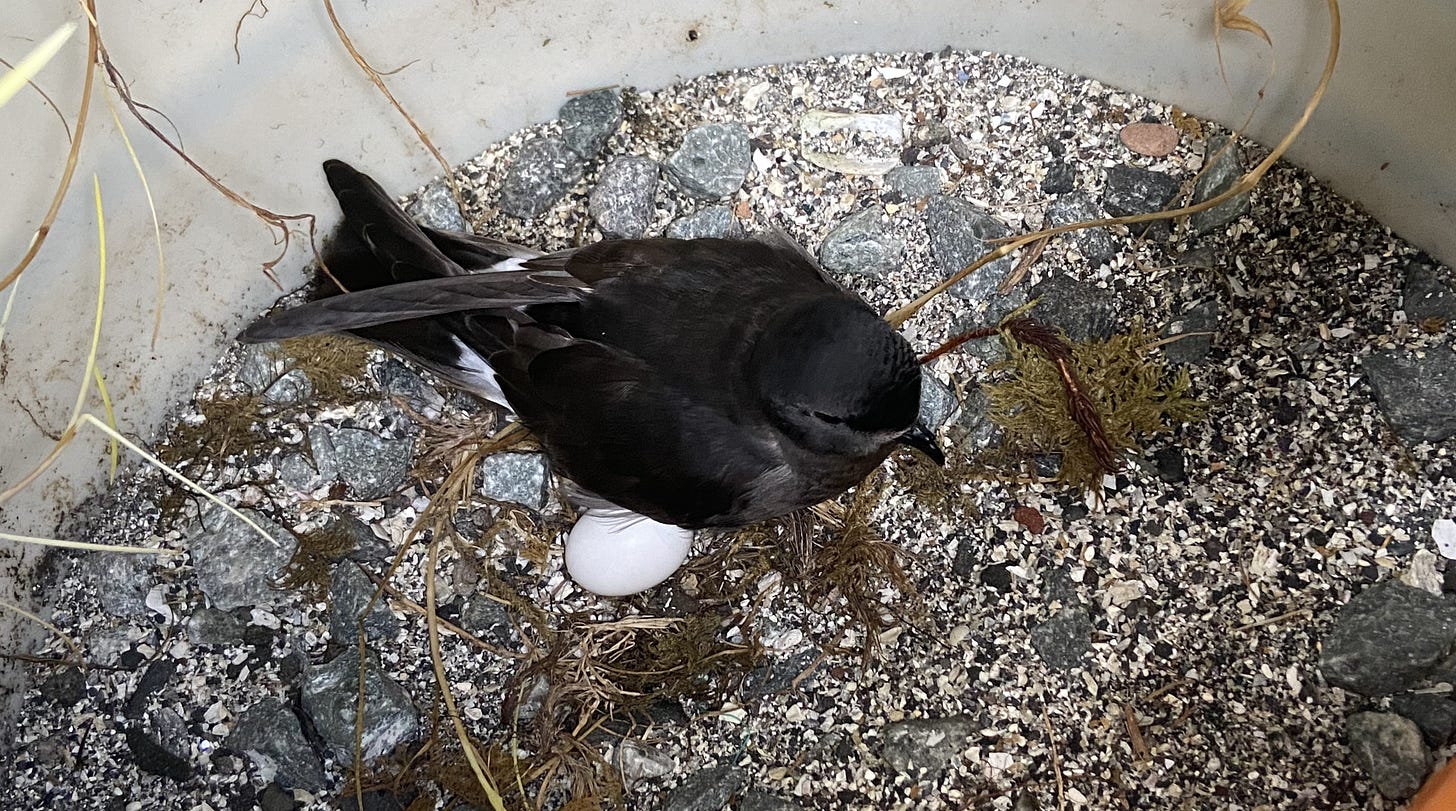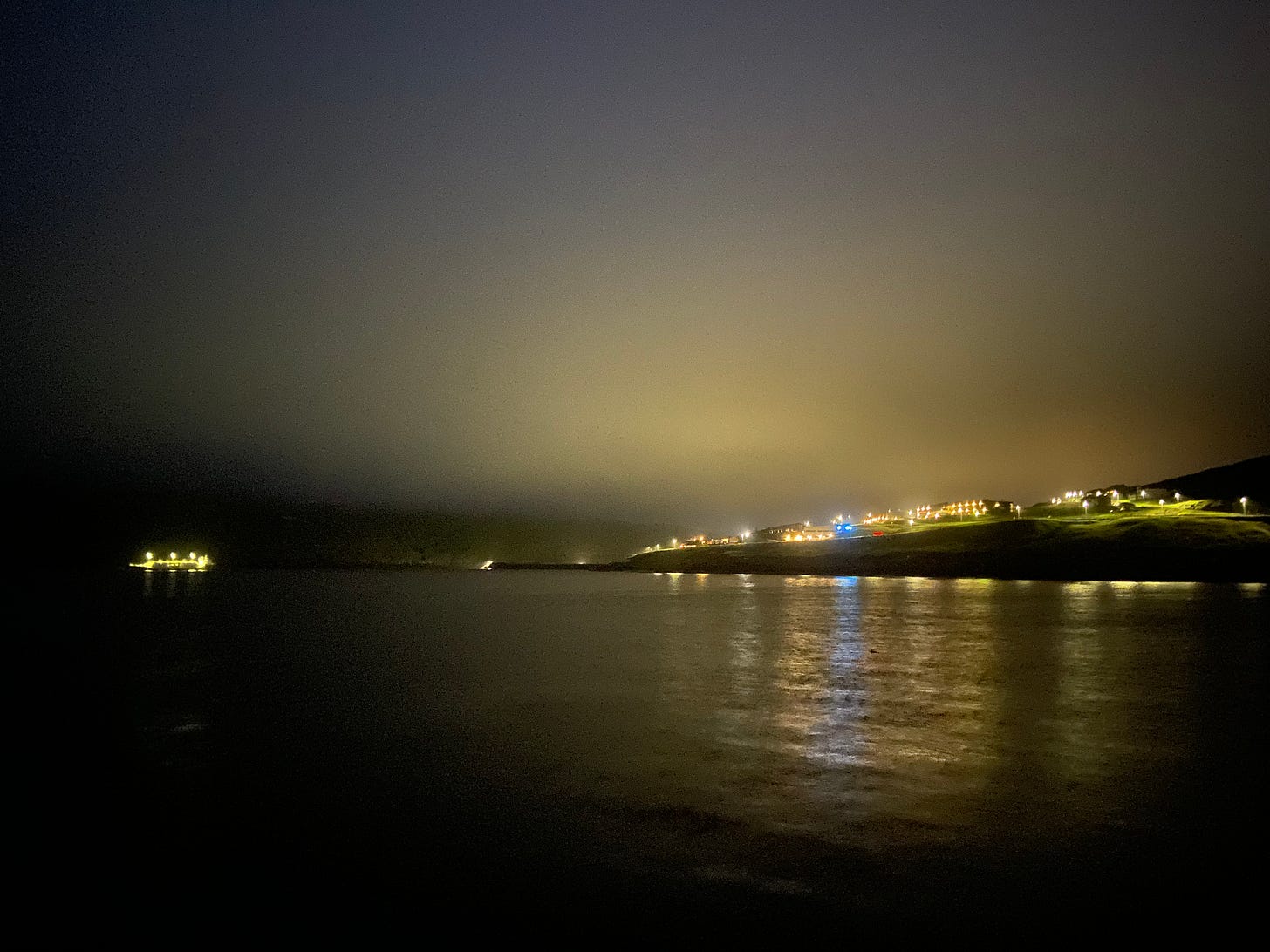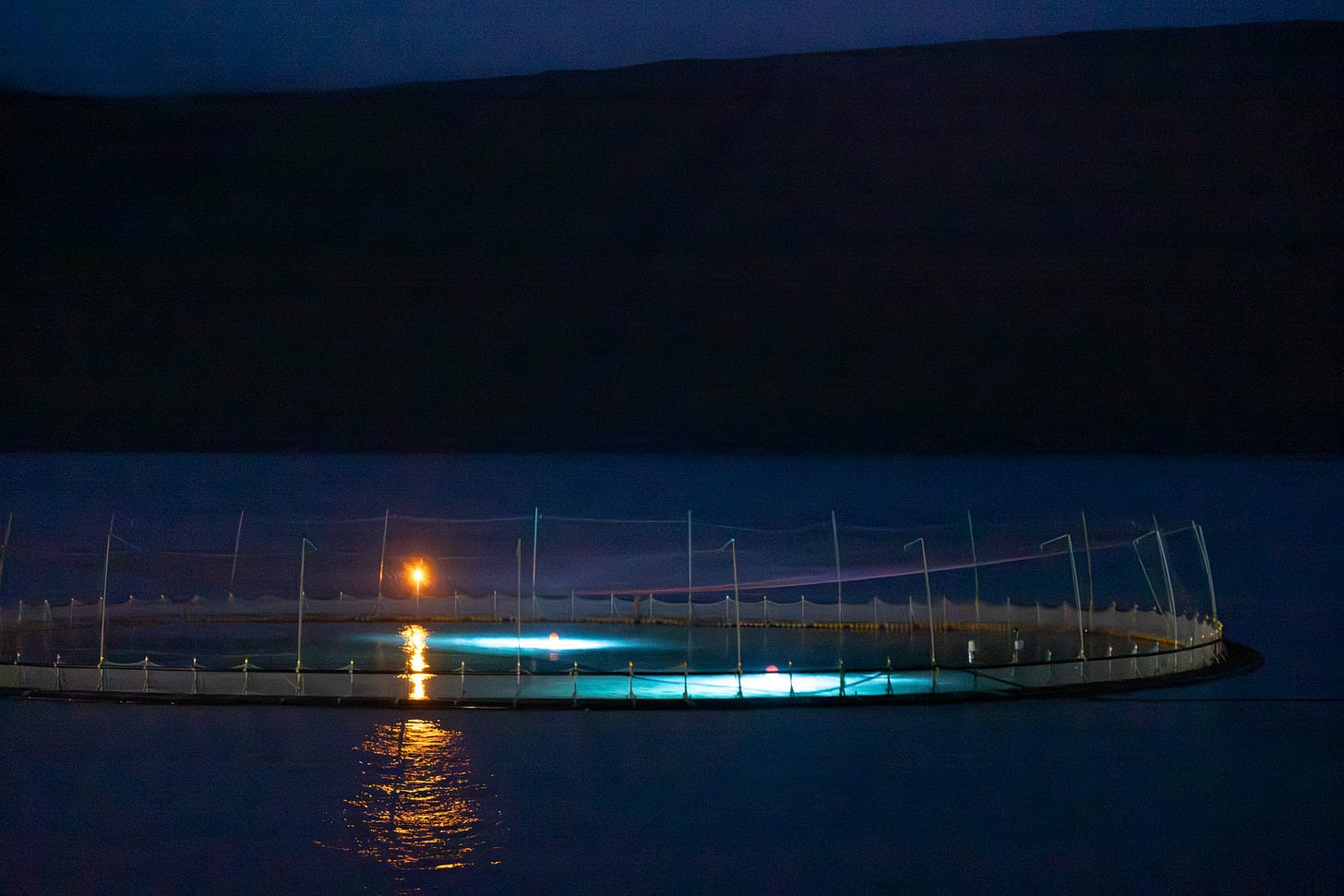Week three of fieldwork in Føroyar
Wrestling with nest cams, low fat Puffins and how to (try) surveying a Storm-petrel colony
Another week in the Faroe islands (Føroyar) has passed by in a flurry of rain showers and fleeting moments of autumnal sunshine. The research team now numbers five, as we welcome Feliksa Żurawska to the islands to take charge of the nest cam work (more on this to follow!); and our research base has shifted to a different spare house in the village of Nólsoy, facilitated as ever by the unending hospitality of the local people of the island, to which we’re massively grateful! It was a varied week of research work, in parallel with the weather, and I’ve attempted to summarise the main aspects to this below.
This week in summary:
August weather sets in
A week of ‘variable conditions’ perhaps best describes this last few days in the Faroe islands. Barely a day has gone by without some form of rain hurling itself from the sky, along with differing strength and direction of Atlantic winds. Fitting fieldwork around the weather has been more of a challenge as a consequence, though it’s been rare to have a day where at least a small window of dry conditions (and even sunshine!) has borne through. Thursday night saw a particularly feisty low pressure system pass through during the night, which saw me propping the tent roof up with a tripod in the early hours of the morning (the frequent collapsing of the tent into your face makes it trickier to get a good night’s sleep).
The Fulmar snowstorm begins
As with the change of weather to autumnal mode, a few subtle shifts in season continue to unfold in the birdlife of the islands. The most noticeable change comes in the appearance of hundreds of non-breeding Fulmars across the rugged basalt cliffs of the islands. Breeding Fulmars have been happily raising their chick (they only have one per pair) since the early summer; but it’s now that numbers really begin to swell with the arrival of non-breeders and younger subadults cruising the basalt cliff lines with their cackling calls to accompany. It’s a spectacular sight to look up from the boulder scree through a snowstorm of these elegant fliers, circling the airspace above and gliding to and fro on effortless aerodynamic wings. These birds are sussing out potential nest sites for the future, interacting with potential mates and generally socialising in some of the best high rise apartments the North Atlantic has to offer…
Ongoing repeat of population census at ‘the Southern Boulder’
As for the week’s research work, one task dominating the daily routine was surveying the transect laid out in a remote part of the Storm-petrel colony (see previous post for the fun we had laying this transect in place!). This site, not far from the beautifully named ‘Southern Boulder’ (there are a lot of boulders in this immense basalt rockfield), is where we’re repeating a population census that was last carried out in 2013 by Tjóðsavnið (Faroe Islands National Museum). The survey requires at least 10 repeat visits to the transect site over the space of a few weeks, identifying Storm Petrel burrows and nest sites each time until no more new nests are added; at that point, we can be quite sure that we’ve pinpointed all active burrows across the transect area and can estimate the number of ‘Apparently Occupied Burrows’. This will provide a really useful comparison to the last census, and also to compare to another transect site being carried out in a similar manner by the museum staff this year.
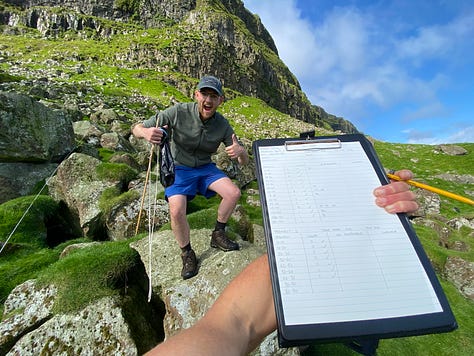
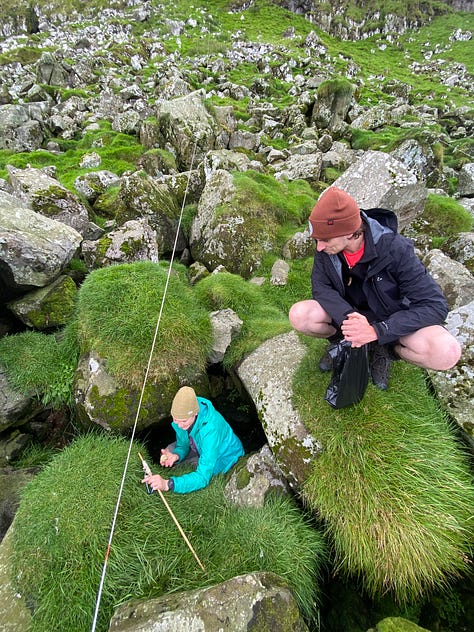
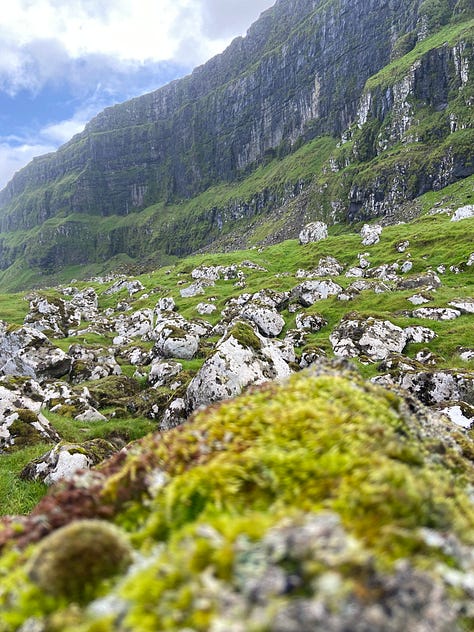
Wrangling Raspberry pi cameras into working order
One aspect of the research occupying a reasonable amount of head-scratching time this week was the nest cams: this camera system was developed by Hannah Hereward, a good friend of mine, during her own PhD on Storm-petrels in the Azores. It’s a brilliant, versatile system capable of fitting into small spaces and being deployed in the field in lots of different situations. For instance, the cameras slot into the nestbox lids of the Storm-petrel boxes, whilst the battery unit and pi board are contained within tupperware outside the box and can be changed whenever battery life and storage require it. However, the cameras are a bit of a nightmare to programme, especially when programming isn’t your realm of expertise. That said, this year we seem to be slowly getting the cams into some manner of working order, with the immense input of Feliksa, who will be using much of the footage for her own research project for a masters at Gdansk University in Poland. This week, we had some lovely pieces of recordings from the boxes, documenting incubating behaviour of the Storm-petrels and also the Puffin chick that is in one of the boxes too!
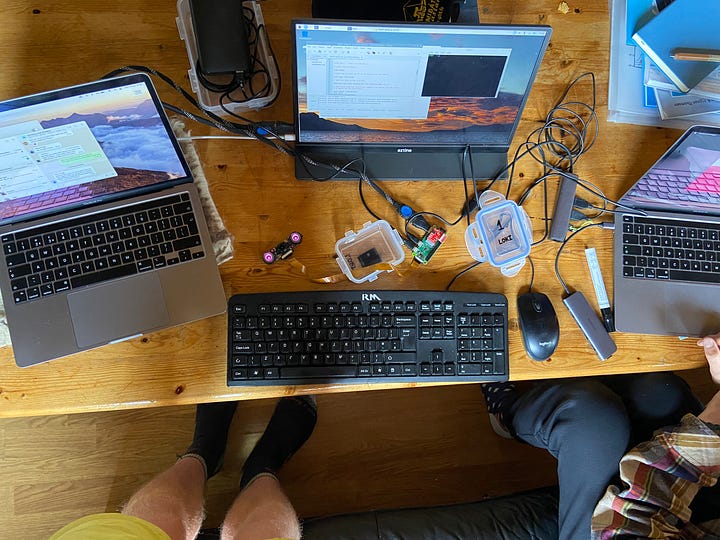
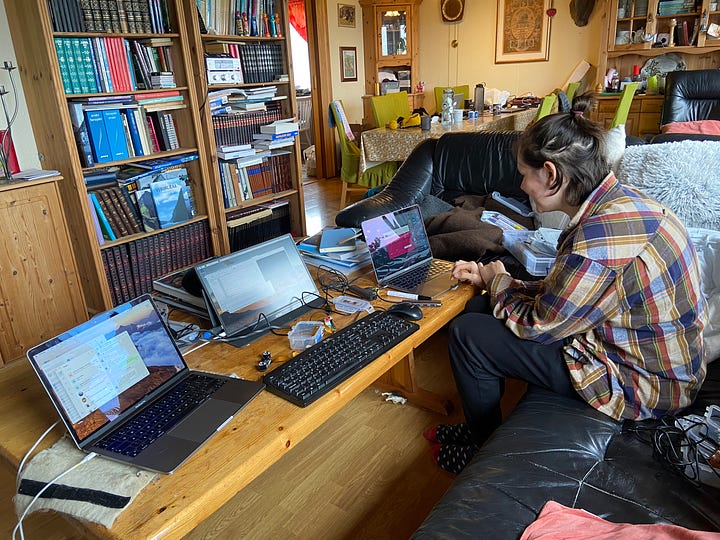
Nest checks reveal this year’s timing of lay dates for Storm-petrels
As ever, the mainstay of the research on Nólsoy has been regular checks of the 97 custom-built Storm-petrel nestboxes, installed since 2021 in the colony by the legend Jens-kjeld Jensen. Anne and Jason have been heading up the regular nest checks over the last couple of weeks, giving time for me to get out and carry out other important aspects of my PhD work such as fish farm surveys (see below). Thus far, it’s looking like a brilliant year for our Storm-petrels in the nestboxes, with 45 birds now on eggs (or egg, rather - they only have one each!), and 60 of the boxes have had some visitation from adult birds; many of these are prospecting pairs that we see once or twice during the summer but will not attempt breeding until next season. Further to the occupancy rates, the regular checks also allows us to understand the timing of key breeding events - such as exact egg laying dates (which varies wildly in Storm-petrels in response to environmental conditions). Thus far this year, our median lay date is 29th July, which is very comparable to last year but generally later by about 10 days than we observed in 2021, 2022 and 2023. We weren’t here for the earliest egg lay dates, and so it’s uncertain exactly when the first chicks will hatch, but around 15th August is often the earliest possible date - so this time next week we might have our first little fluff balls in the boxes!
Night-time fish farm surveys
As the nights draw in (though it’s still light until 11pm at the moment!), the night work for my research project will become ever more frequent - one of the consequences of studying a predominately nocturnal species…
One aspect of this is understanding how seabirds in general, and Storm-petrels in particular, interact with fish farms around the Faroe Islands. This is a big industry out here, and little is known about its impact on seabirds - issues such as entanglement occur (larger birds like gulls getting tangled in the mesh that cover the fish pens), but no hard data exists on such effects. Further to this, there is little known about how Storm-petrels interact with such infrastructure, especially where artificial lights are involved (Storm-petrels are highly sensitive to artificial light under certain conditions and at certain times of the year). Thus, to uncover more about this topic, I am collaborating with one of the fish farm companies in the Faroe Islands - Hiddenfjord - to carry out surveys, assessments of bird entanglement, and use our GPS tracking work to understand if these fish farms influence the behaviour and spatial use of seabirds like the Storm-petrel in this region. This work involves shore-based surveys using thermal imaging binoculars to carry out timed scanning counts of birds at night around the fish pens. More on this to come!
Low fat Pufflings
We once again have a pair of Puffins nesting in one of our artificial nest boxes here on Nólsoy, which allows us to closely monitor the chicks’ progress and assess how well the foraging conditions are for the parents. Sadly, the chick is growing very slowly, frequently dropping in weight over successive days and barely half of what it should weigh for its age. This could be partly down to new and less experienced parents, but more likely reflects the wider situation we’re seeing in the colonies this year - many dead chicks, a very late breeding season, and not enough high-fat, juicy sand eels being brought in.
Puffin populations in the North Atlantic have crashed in recent decades, and the Faroe Islands is no exception. Where previously skies darkened under the volume of puffins circling island colonies, now they are pale shadows of this former abundance. Whilst hunting has played a part, the effects of overfishing and climate change are the primary drivers of this decline, causing significant changes to the abundance and distribution of their main food sources in these areas.
A glimmer of hope from UK waters this year sees the permanent closure of Sandeel fishing in the English North Sea and all Scottish waters - which will give seabirds like the puffin a welcome helping hand. We will see how the situation develops for these charismatic and highly cherished seabirds. In the meantime, we will follow the progress of our little Puffling with tense anticipation…
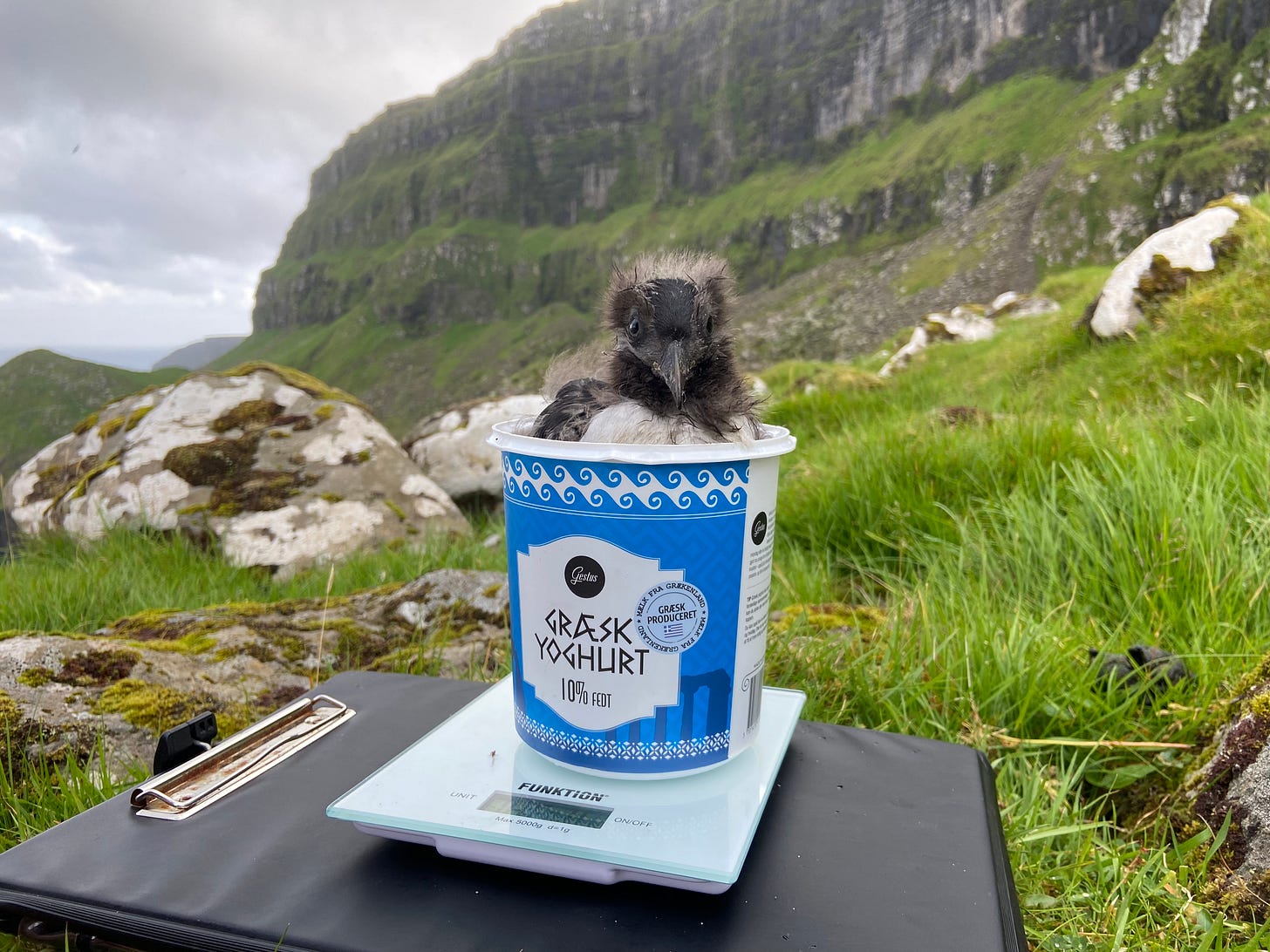
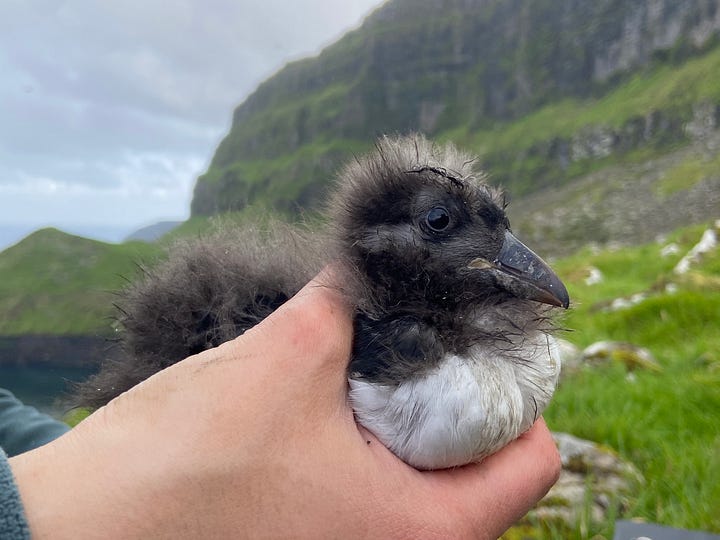
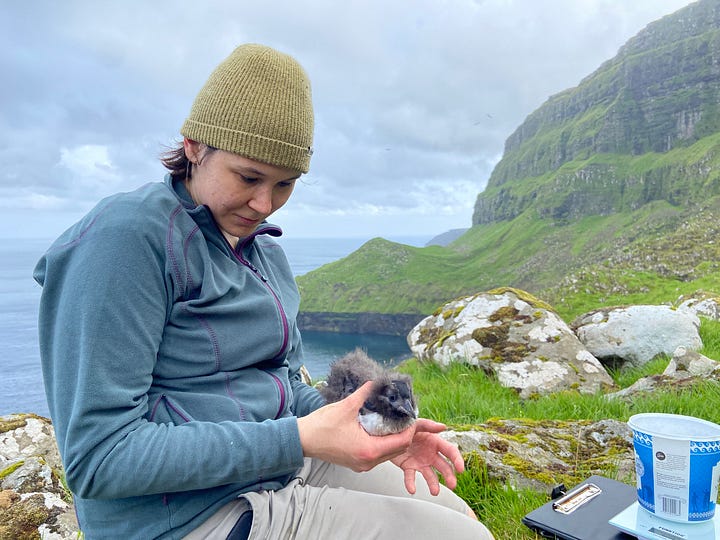
That’s all for now, I think! Some of the team (including myself) are off to the remote western island of Mykines for the first days of the week, and hopefully our first chicks may hatch out in the nestboxes back on Nólsoy in a matter of days!


